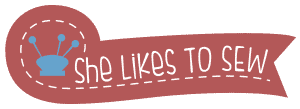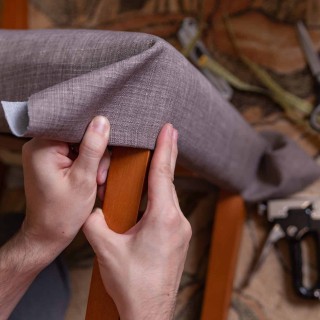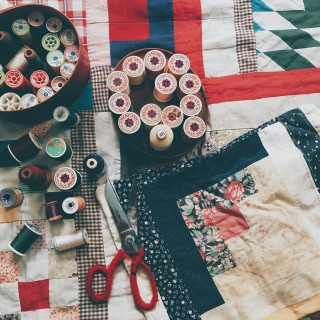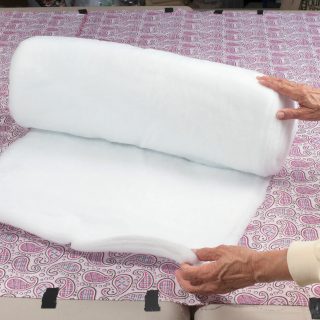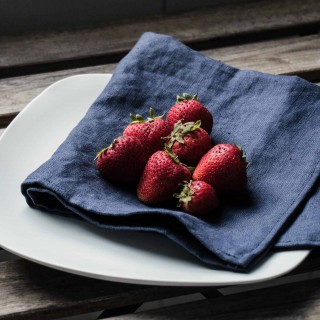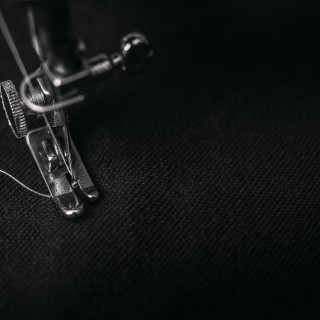If you’ve been reading my tutorials before, you may have noticed that I sometimes recommend applying applique to your sewing projects for the sake of a more authentic design.
Some of you with less experience in sewing may have wondered what applique is?
Simply put, applique is one of many ways to design textiles. It’s used to visually enhance different types of textiles.
In this article, I will try to explain what applique is, how it works, and the possible application methods.
What Is Applique
Are you a fan of elbow patches? Would you consider them high fashion? Elbow patches are a fashion disaster for many, while certain social circles wear them with pride. But despite the dispute about their aesthetical value, everyone would agree that the technique of creating them is kind of amazing.
Well, elbow patches are an excellent example of applique. Applique is a design technique of attaching one material onto another, and it’s one of the oldest fashion designs. Due to it being so good and functional, designers and hobbyists still use it today.
The term applique originates from the Latin word “applico”, meaning “attach”.
So, regardless of whether we agree on liking or disliking the elbow patches, we need to agree that they are brilliantly made.
How Does Applique Work?
The process of applying applique is quite simple. The attachment process begins with taking the “base” fabric – the main piece of textile, which can be anything from a potholder, oven mitten, t-shirt, blanket, or towel, and attaching the applique onto it.
In case your design also contains some kind of beads, pearls, and similar decor, it’s very simple to include them in your design.
Applique is a decorative technique, so it’s much more than just sewing. Opposite to e.g. repairing a pair of ripped jeans, you actually need to think about the impact of each item you want to add on the overall looks of your design.
The technique is also great because it allows you to play with so many things: colors, textures, patterns, dynamics between textiles, etc.
Sewists mostly use applique to create a very specific design, making it an excellent option for personalized gifts. For example, you might want to sew a throw blanket with a repetitive floral design on the borders. You can either weave the flowers into the material, which is quite hard, time-consuming, and limited in options or, you could make flowers out of fabric and attach them to the main piece. It’s a simple procedure realistic for anyone to try.
Application of Applique
When we speak of applique, we speak of a specific needlework technique that allows us to create decorative patterns and scenes by attaching smaller fabric pieces to a larger “base” fabric. A good, applique-friendly textile should be durable, and it shouldn’t fray easily.
When you apply a piece of applique, its edges are usually folded underneath, and then you can attach them by either making a satin stitch that goes all the way around and overlaps the edge, or you can glue, pin, or straight stitch the patch at first, to make sure that it is stable in place, and then apply the satin stitch. You can also directly straight stitch the applique some ¾ to 1 inch from the edge.
If you finish a quilting project and want to make it a bit more authentic and alive, you can also apply applique there. Many cultures like traditional American, Hawaiian, Amish, Egyptian, Indian, and Pakistani, use different forms of patchwork to attach applique to their quilting designs.
Another unexpected application of applique is for things that need to be seen from far away, such as a banner.
Types of Applique
Despite its versatile use, there are three methods of application that form the three broadest categories of applique types: machine, hand, and fused applique. Let’s talk about that further.
Machine Applique
If you have a sewing machine, there are two main ways to complete your applique. The traditional one is to “track and trim”, which is a bit advanced, as it involves making a stitch on the placement line and positioning the larger fabric piece over the stitches. Then, you complete the second stitching row so that the fabric gets attached to the base material. Once you have that completed, you should trim any excess fabric so that your applique reveals its final shape. Although this method can be time-consuming, it is also gratifying.
Another way to apply machine applique is to use a pre-cut shape. This is becoming increasingly popular as it’s so much simpler and less time-consuming. The shape can be cut with a laser or bought in a store. To complete this application, you can use a zig-zag stitch around the design edge, and this should help you create a smooth finishing edge for the stitches that will follow, and it helps keep the fabric in one place. Next, you need to set up your machine for making a satin stitch and cover the zig-zag stitches of the design. The edge of your shape should be placed precisely beneath the needle as that way, half of the stitch will fall on the background of the fabric, and another half will fall on the shape of the applique. This will surely secure it in place.
Hand Applique
Although machine applique is considered faster and more practical, there are many reasons to opt-in for hand applique. For example, it’s a great option for quilting projects and dimensional designs.
It may sound as complicated, but hand applique is basically just hand sewing a shape to the fabric, and instead of the sewing machine, you use needle and thread.
The traditional method of hand applique is the “needle-turn method”, in which you need to use a needle to turn underneath the seam allowance, but at the same time, you are sewing the pieces of applique to the larger fabric piece (the background). This allows you to add certain embellishments to your project design. E.g. you can easily slip some beads or sequins on the thread as you hand applique around the edges of your applique designs.
Fused Applique
Traditional applique sewing methods can eat up a lot of your time, although it’s very rewarding, fun, and calming to try using them. However, due to a lack of free time, many people are searching for shortcuts, and one of them is to use the fusible web. Fusible web is a good option because it’s iron-on adhesive, and you can quickly make the most beautiful designs.
If you’re in a hurry to finish your sewing project, if there is too much on your plate to sew all by hand and/or machine, this should be your go-to method. Fused applique requires you to fuse the base fabric using the web, and then you machine stitch it on top so that the pieces hold together. This gives an embroidered look to your finished applique.
Applique Styles
You can use any of the three types of applique to create different applique styles. Here are some suggestions.
Applique with Smooth Edges
If you are using a sewing machine, you can overstitch the applique’s raw edges with the thread to give it an elegant finish.
Applique with Raw Edges
Opposite from the first one, this technique is a perfect option for small sewing projects, and it requires sewing fabric pieces on a background fabric, but when it’s time for the finishing touches, you just leave the edges as they are. You don’t turn them nor stitch them. You can do this by hand or the machine, and it can give a sophisticated look to your design without much effort.
Hoop Applique with Multiple Needles
You can create a bigger hoop design with your sewing machine for those of you who are advanced sewists already. The placement stitches should be made on your design, and the base fabric should be positioned so that each section is being stitched accurately. This should provide you with an ending design that looks fully finished after the machine is done stitching. It is also a wonderful technique if you prefer a detail-oriented look.
Reverse Applique
Yes, you’ve read it right. Instead of sewing on top of the base fabric, you just align the two fabrics together and stitch the applique motif on top of the background. Then, you should remove the fabric parts to reveal the applique shape.
Final Word
Applique is definitely one of the more advanced methods of decorating our sewing projects and designs. The technique has been with us for quite a long time, and it has shown some amazing results (despite the elbow patches). It can be used in many different ways and for many different purposes. If you want to make cool, original, authentic, and professional-looking sewing projects and designs, in my opinion, you should definitely apply applique more often.
